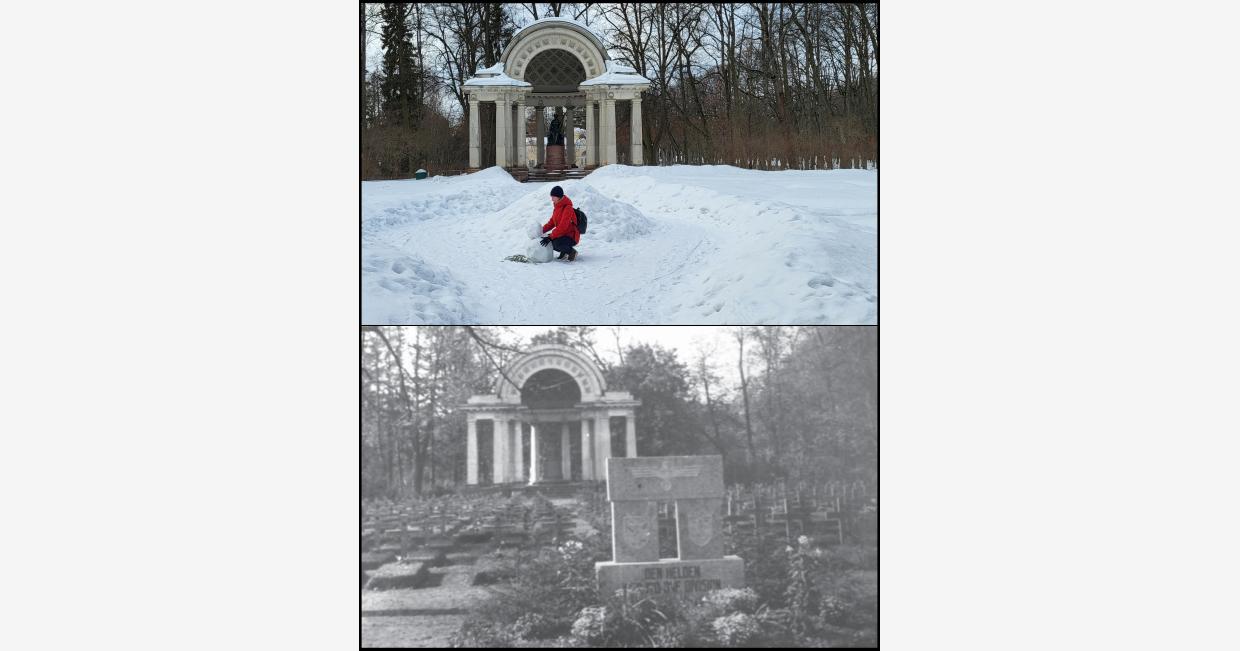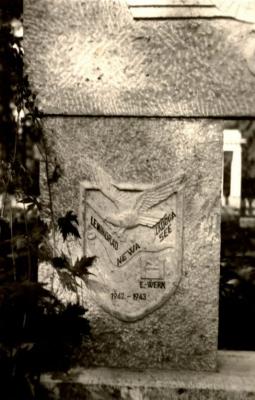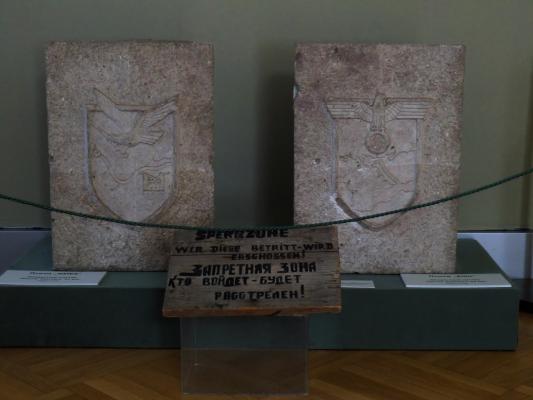Pavlovsk, Pavlovsk park. February 2022 / Slutsk, Pavlovsk park. Summer 1943
Memorial to the "Heroes of the 170th Infantry Division (Den Helden der 170. Inf. Division) at the German cemetery near Rossi Pavilion.
The choice of the cemetery's location was determined partly by the fact there was an officer hospital in the southern wing of the Pavlovsk palace, partly because the Rossi Pavilion resembled German soldiers of a traditional Catholic or Lutheran crypt with a female statue in loose drooping garments. An unknown master carved these stones to a German artist's design, representing the two main campaigns the division fought in: Crimea and Leningrad. The "Leningrad stone" has a schematically depicted map of the river Neva from its source in the Ladoga lake to the its mouth at the Gulf of Finland. Interestingly enough a single structure stands out on the drawing - the "E-Werk" or the 8th Regional Power Station, a reinforced concrete building which was turned into an impregnable fortress by German troops. The 170th Infantry Division fought in the area around this power station in early 1943 and suffered massive casualties. On my tours dedicated to the breakthrough of the siege of Leningrad I tell about the battles for the power station which lasted for more than an year and a half and show the pictures of the station before and after the war. It still functions, having been rebuilt after the war, using natural gas for fuel instead of peat from nearby bogs.
After the liberation of Pavlovsk the cemetery was levelled to the ground and its crosses and memorials were destroyed. These two stones were, nevertheless, consigned to the museum storage and in 2014 they were exhibited at the exhibition dedicated to the 70th anniversary of the Lifting of the Siege. A few years earlier the German War Graves Union exhumed soldiers remains in the park around the pavilion and interred them at the German war cemetery in Sologubovka.
The 170th Infantry Division took part in the Barbarossa invasion in June 1941 as part of Army Group South. In September the division stormed Soviet fortifications in Crimea and after the fall of Sevastopol in July 1942 it was transferred to Army Group North along with other divisions and heavy artillery units in order to take part in the decisive assault on Leningrad which was meant to take place in September. However, it had to be urgently dispatched to stem the Soviet 3rd Sinyavino Offensive which inadvertently pre-empted the German assault on the city. In January 1943 401th Regiment of this division found itself at the spearhead of the Soviet offensive, suffering heavy casualties in the first hours of Operation Spark. Throughout the rest of that year the division occupied positions at different sectors of the Leningrad front and in the summer of 1943 it was deployed in the vicinity of Pavlovsk where this picture was taken. Having retreated from Leningrad to Narva with the remains of Army Group North in winter 1944, the division saw the end of the war in East Prussia, surrendering in May 1945.


